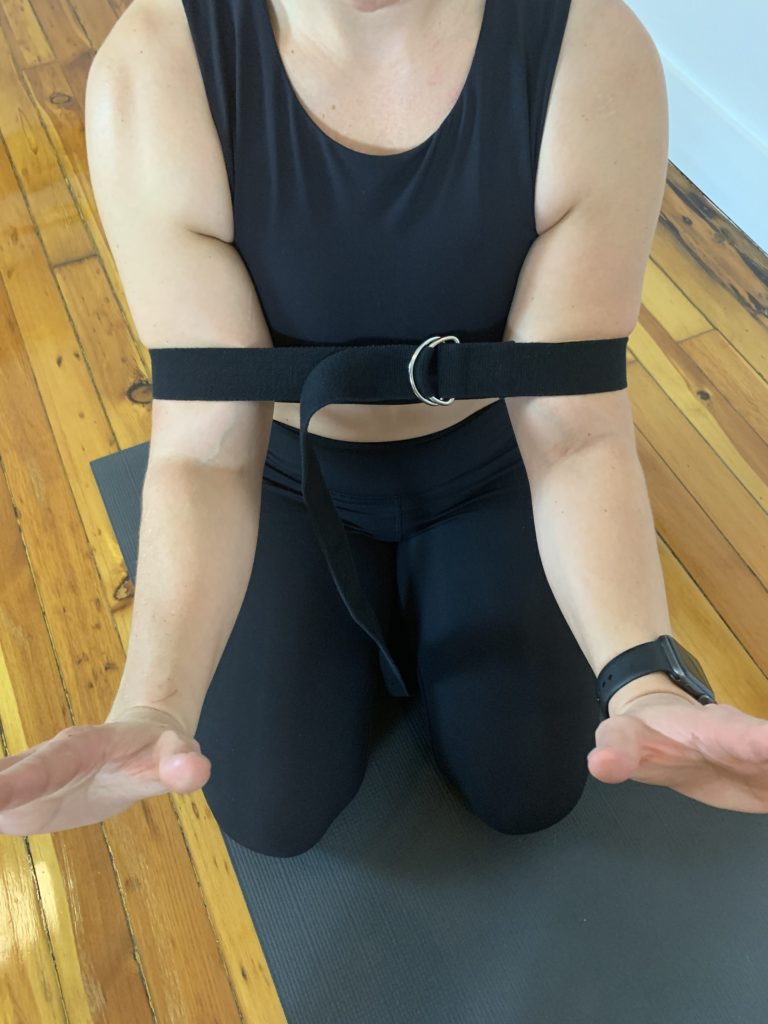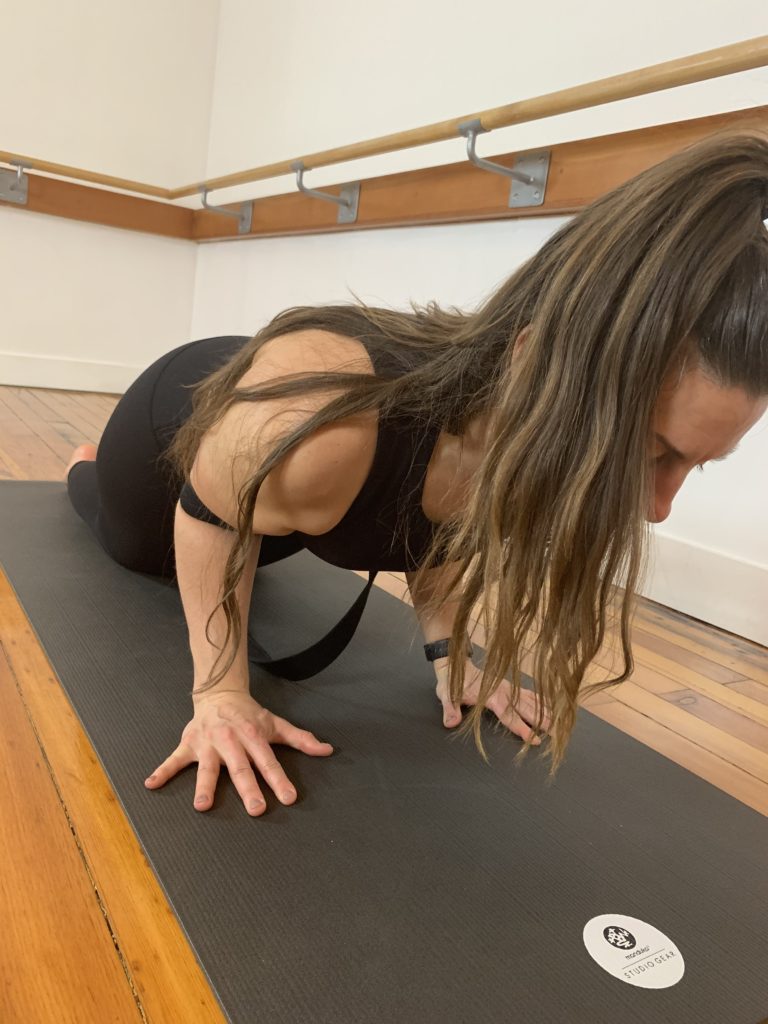We asked, you answered. So many of you want to better understand one of Vinyasa’s most common postures: Chaturanga Dandasana.
And we don’t blame you! Working with chaturanga is a process. Creating strength in the posture, and feeling confident about alignment, takes time. Please know that there are many pieces and parts to landing this posture.
The truth is that Chaturanga Dandasana is constantly blown by in every Vinyasa yoga class. It is often cued and seldom explained.
The purpose of this blog is to give you the ins and outs and whys of this common yoga posture.
What is Chaturanga Dandasana?
Let’s start this journey with a basic breakdown of what Chaturanga Dandasana even means. For starters, this is a Sanskrit word, and it breaks down to the following:
Chatur: “Four”
Anga: “Limb”
Danda: “Staff” — As in, the spine of the body
Asana: “Posture”
Put it all together and you get Four-Limbed Staff Pose.
Why Do We Chaturanga?
In any Vinyasa class, you will get possibly dozens of Chaturangas sprinkled in. Every Chaturanga that you do should have intention. But unfortunately, sometimes we check out and do them out of mere habit. Remind yourself that each Chaturanga you do has a purpose, ie. the following…
1. Chaturanga strengthens your entire body.
True, and we’re sure you can feel that. Chaturanga strengthens your entire body. It tones your inner thighs and quads. It awakens you to the stabilizing power of your core, as it challenges you to engage beyond the “six-pack” abs. To do Chaturanga correctly, you must engage your deep core, transversus abdominis. Chaturanga majorly strengthens your upper body as well: your shoulders and your triceps.
Through learning Chaturanga, and strengthening this challenging posture, you prepare your body for a stronger practice. Because of its core and upper body conditioning, this posture gets your body ready for inversions and arm balances. It essentially prepares you for all weight-bearing postures.
2. Chaturanga resets your body and breath in Vinyasa.
We almost always find ourselves in Chaturanga between or at the end of sequences. Because of this, Chaturanga feels like pushing the reset button on both your breath and your body. Chaturanga should feel like you’re returning to excellent alignment and disciplined breath practice.
If you turn into a robot and completely check out in your Chaturgangas (as we all do from time to time) — you aren’t getting all you could from your practice. Allow this posture to refocus your practice intention each and every time.
Myth Busting: Chaturanga does NOT include Upward Facing Dog
Before we break down the alignment of this posture, we’d like to take a moment to set something straight.
Chaturanga Dandasana is NOT the same thing as Upward Facing Dog. Upward Facing Dog is a posture that commonly follows Chaturanga.
The problem with assuming Chaturanga and Up Dog go hand-in-hand is that it often leads to a “swoopy movement” that is absolutely horrendous for the health of your shoulders. If you understand that these postures are separate, you will put the necessary pause in between your Chaturanga, and your Up Dog. This will automatically uplevel your alignment.
Here’s the swoopy movement that we hope you’ll boot out of your practice like, yesterday…
Now, here’s what a healthy Chaturanga looks like (sans Up Dog):
Much better, yes? Let’s talk about how to get there. We’ll begin by breaking down Chaturanga Dandasana and how to find stellar alignment. Then we’ll teach you how to move from Chaturanga into Up Dog — all safe and swift-like.
Chaturanga Dandasana Alignment
To begin creating a strong Chaturanga, you need to create a strong Plank Pose. A strong plank pose is the foundation for a strong Chaturanga.
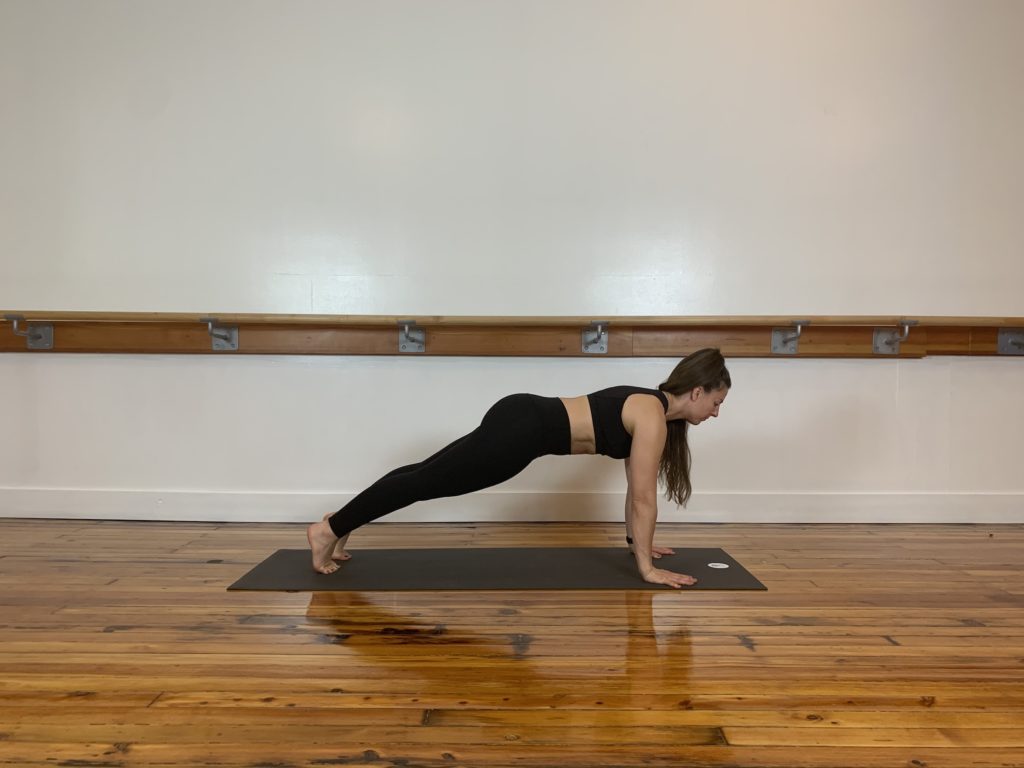
For a strong Plank pose:
- Build the posture from your feet first. With your feet hip-width distance apart, hug your ankles inward.
- Moving up the legs, also squeeze your inner thighs together, slightly rotating them up toward the ceiling.
- Get your core active. Start by hugging your front hip points together. Wrap your side bodies in toward the middle “staff” of your body. Pull your low ribs to the centerline of your body.
- With this core engagement, lengthen your tailbone down the back of your legs, toward your heels.
- Now, push your hands into the floor harder to feel the space between your shoulders activate.
- To avoid excessive doming in the upper back: lengthen your heart forward. Lift your chin off your chest.
- Extend the crown of your head forward.
Yes, it’s true. There’s a ton going on in Plank Pose. And now it’s about to get better. Because you need to keep all of the above alignment points intact, while you lower halfway down into, essentially, a tricep pushup.
Finally! How to Chaturanga
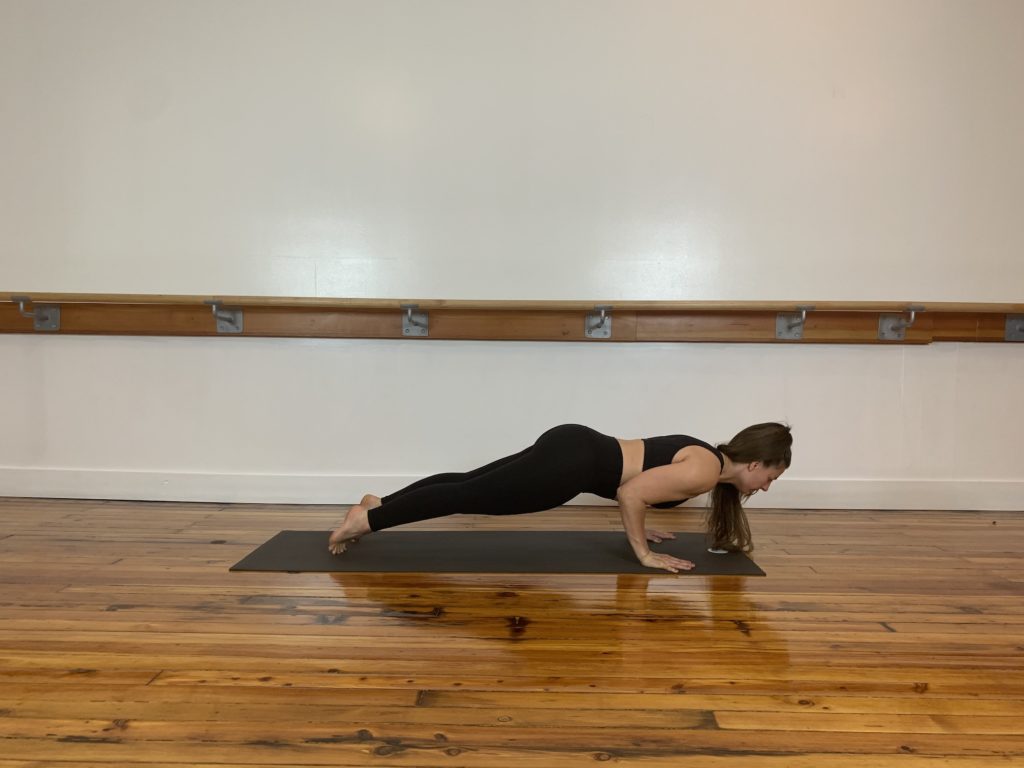
From Plank Pose, bend your elbows straight backward and lower your body halfway down or less. As you lower, keep your elbows tucked against your side bodies. Sounds simple, it’s not 🙂 Here’s the alignment you need to keep in mind for Chaturanga-time:
- It’s quite normal for elbows to wing out as you lower. If that’s happening, you need to take Chaturanga modified, on your knees. (More on this in a sec.)
- What’s going on your upper chest? Your core? Sometimes we disengage when we lower, which results in the shoulder blades collapsing on the back body and the chin sliding forward — creating the “turtle” effect. Do you look like a turtle? It’s okay. We all do at some point — and it’s a sign to work on your modified Chaturanga.
- Make sure that you do not lower down past your shoulder-line. Your elbows should never be higher than your shoulders. At most, they will be perfectly in line, creating a 90-degree angle inside the elbows.
- Don’t forget about your legs! Keep your legs engaged throughout.
How to Modify Chaturanga Dandasana
Modifying Chaturanga is not defeat. It’s actually a win. When you modify Chaturanga, you get to strengthen your body more effectively. You’re creating a much stronger Chaturanga end-game when you can simply modify.
To modify Chaturanga, you simply drop the knees from Plank Pose. Your knees will situate behind your hips, so that your body is at a slant. From this position, bend your elbows straight back and lower halfway down — or less. It looks like this:
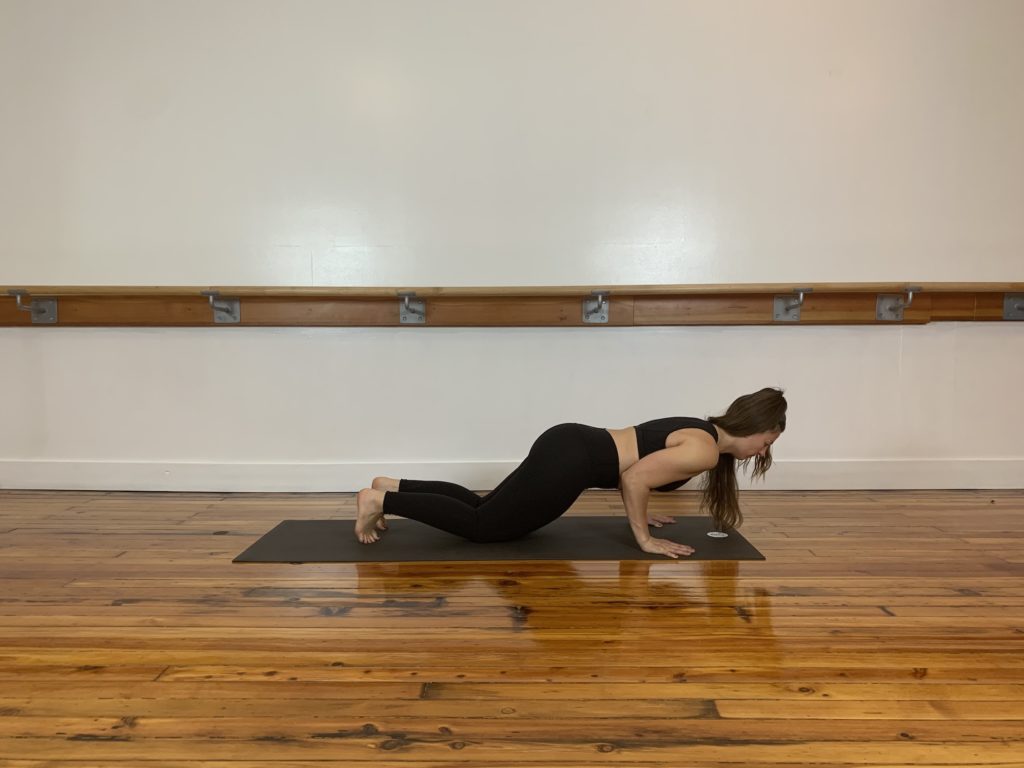
You don’t have to go all the way to elbow-shoulder alignment. In fact, if your shoulders only lower an inch or two, we can call this a very successful day.
You will build strength in your entire body from doing modified Chaturangas. If you actually take your time to build your strength in the modified position, your alignment will be so much better when it’s time to lift the knees.
The ego loves to make an appearance when it comes to Chaturanga. For the sake of keeping up with a class, or competing with ourselves/others, so many of us throw ourselves into poor Chaturanga alignment.
If we want to get a good Chaturanga, the first step is to check the ego, and allow ourselves to be where we need to be. Even if that means lowering down less, and/or using the knees.
Chaturanga Dandasana to Upward Facing Dog
This is perhaps our most common Vinyasa sequence: Plank to Chaturanga to Up Dog to Down Dog. As a reminder, Chaturanga is not the word for all of this. It’s only the lower down from Plank to Four-Limbed Staff Pose.
When you complete Chaturanga, prior to moving into Upward Facing Dog, our first suggestion: take a brief pause. A brief pause between the exhale of Chaturanga, and the inhale of Upward Facing Dog. This will help you keep the integrity of the alignment.
Our next suggestion is to pay just as much attention to practicing your Up Dog alignment. Sometimes we’re so fixated on nailing Chaturanga that our Up Dog gets sloppy. So let’s talk about Up Dog for a second.
Upward Facing Dog Alignment
From Chaturanga, this is how you get into Upward Facing Dog:
- Turn the tops of your feet down
- Send your chest to the front of the room; draw your shoulders back
It looks like this. The transition is fairly simple, but we need to address some key alignment points. When you’re in your Upward Facing Dog, tend to the following:
- Push down through the tops of your feet so that your knee caps lift from the floor, and ideally your thighs (this may take some time). There should be a ton of strength and activation through the legs.
- Squeeze your front hip points together to engage the belly. So often we disengage in Up Dog, resulting in lower back issues. Think about lengthening your lower back. It may feel that your back is “less bendy.” Lengthen your lower back and focus on curving your spine forward around the ribcage instead.
- Micro-bend your elbows so that you feel the biceps engage. If we had a dollar for all the locked/hyperextended elbow joints we see in Up Dog…
- Roll your shoulders back, broaden your collar.
- Tuck your chin toward your throat slightly and lengthen through the top of your head.
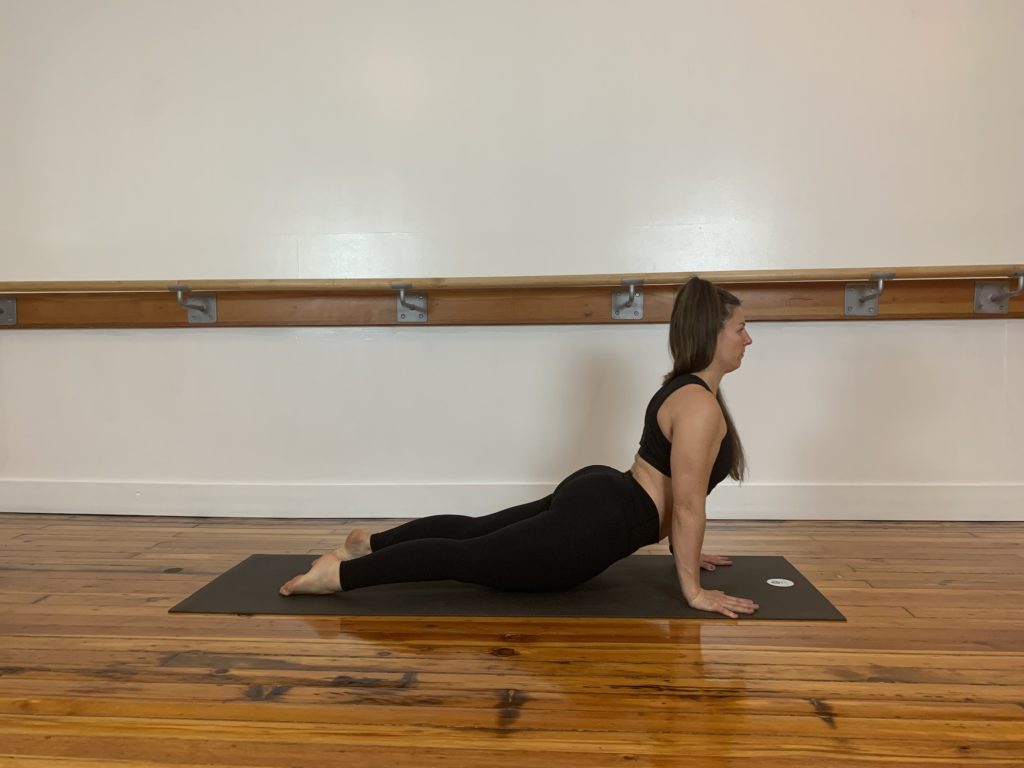
Tricks to Improve Your Chaturanga
As we’ve indicated, Chaturanga is a journey. It’s not easy. And you’ll want to accept all the help you can get 🙂 We’re STILL workshopping our Chaturangas, and we’re a decade into the biz.
There are some tricks you can use with props to help your body memorize what “good” Chaturanga alignment feels like.
Use Blocks in Chaturanga Dandasana
There are a few ways you can use blocks to help you improve your Chaturanga game:
- Put a block between your inner thighs and squeeze it like you mean it. This will help the legs stay online while the upper body lowers.
- Put two blocks under your shoulders. This will show your body how low you need to lower down. It prevents your shoulders from passing the elbow-line, which is great. When the shoulders dip too low, we put a lot of pressure on the shoulder girdle and muscles of the rotator cuff.
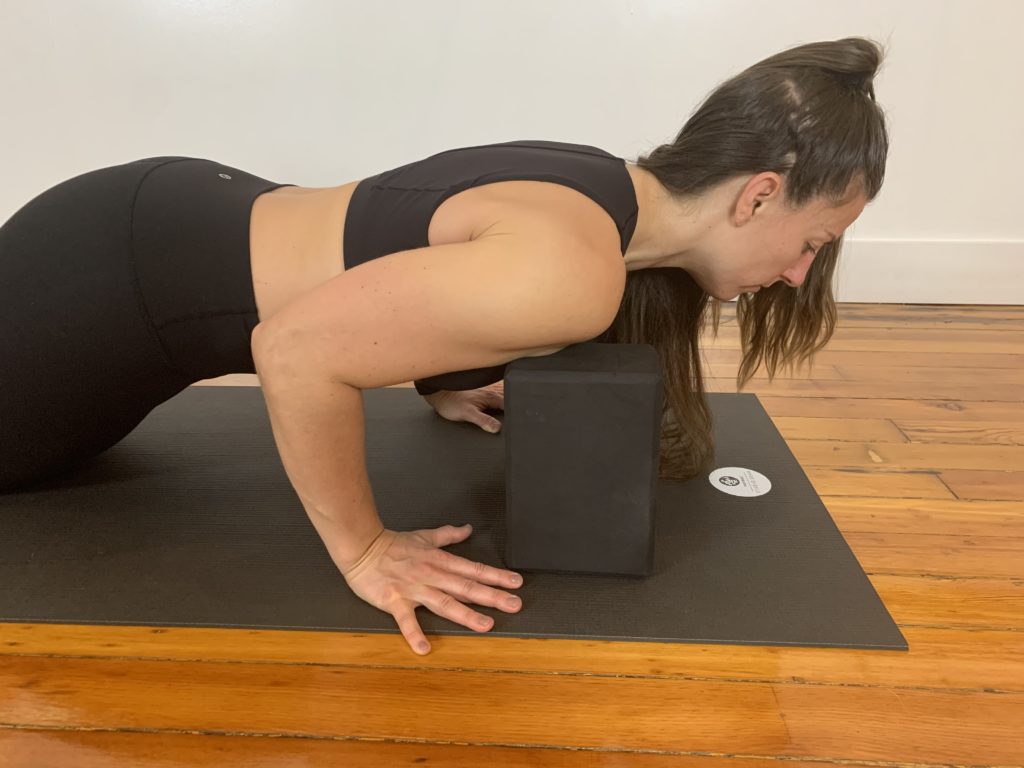
Use a Strap in Chaturanga
Loop the strap around your upper arms, just above your elbow creases. When you put your elbows to your sides (mimicking Chaturanga) the strap should fit snuggly.
Then, find your plank pose. You’ll notice that you have a bit of a hug around the arms from the strap. This is good: it will prevent your elbows from splaying out too much as you lower down. (The #1 alignment slip for new Chaturanga-ers.)
As you lower, you’ll feel the strap stop and support your chest, at about the perfect depth for Chaturanga. Like magic! The strap will help you lock-in your alignment.
Last Thoughts on Chaturanga
It really doesn’t matter how long you’ve been practicing yoga. Our relationship to Chaturanga is like our relationship to our beloved: it takes constant, thorough, compassionate WORK — and the less ego involved, the better 😉
Have questions? Don’t be afraid to ask them in the comments below! Try on these tricks and alignment notes, and let us know what you think!
Want more alignment tips with demonstrations on how it’s done? Grab our Yoga Alignment course for just $10 and learn about 19 of the most commonly seen poses and how you can adjust your alignment in them.

Devon Barrow is a yoga teacher for Ohana Yoga + Barre, our amazing social media manager, and a talented teacher for the YTT program. Yoga has been a part of Devon’s life since she was nine years old and continues to be her agent of healing and health. You’ll find both creativity of the physical body and the power of mindfulness in her classes.
